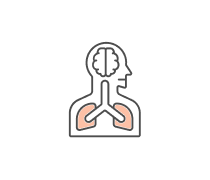The somatic nervous system is responsible for controlling voluntary activities, specifically skeletal muscle movements. This means that it allows us to consciously move our muscles and perform actions such as walking, running, and lifting objects. In contrast, the autonomic nervous system controls involuntary activities such as the functioning of the digestive system, heart rate, and breathing. The neurotransmitter involved in the somatic nervous system is acetylcholine, which is responsible for transmitting signals from the nerves to the skeletal muscles, causing them to contract and move.
















